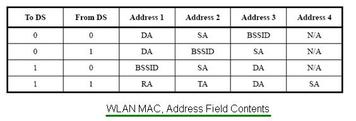802.11 vs 802.16: Key Differences Explained
Advertisement
This article highlights the key differences between the 802.11 and 802.16 series of standards. IEEE 802.11 standards define Wireless LAN (WLAN) technologies, while 802.16 standards define WiMAX technologies.
Here’s a comparison table summarizing the core differences:
| Specifications | 802.11 | 802.16 |
|---|---|---|
| Technology | Wireless LAN (WLAN) | WiMAX |
| Standard Variants | 802.11a, 11b, 11g, 11n, 11ac, 11ad, etc. | 802.16a, 802.16d, 802.16e, 802.16m, etc. |
| Coverage Range | 30 to 100 meters | 7 Km to 50 Km |
| Usage | Indoor | Outdoor |
| Bandwidth | 20 MHz, 40MHz, 80MHz and 160 MHz (depending on the variant) | Dynamic allocation, from 1.5 to 28 MHz (depending on user needs) |
| Data Rate | Up to 54 Mbps (802.11a), 300-600 Mbps (802.11n), Gbps (802.11ac/11ad) | Up to 150 Mbps (depending on bandwidth usage) |
| QoS | Supported in IEEE 802.11e | Different QoS options available (UGS, rtPS, nrtPS, BE) |
| Frequency of Operation | 2.4 GHz, 5 GHz | 2.5, 3.5, 5.8 GHz |
| Tutorial Link |
In summary:
- 802.11 (Wi-Fi): Primarily designed for indoor, short-range wireless connectivity. Think of connecting your laptop to your home router.
- 802.16 (WiMAX): Designed for outdoor, long-range wireless connectivity. It’s more akin to providing wireless internet access to a larger area, like a city or region.
Advertisement
 RF
RF

